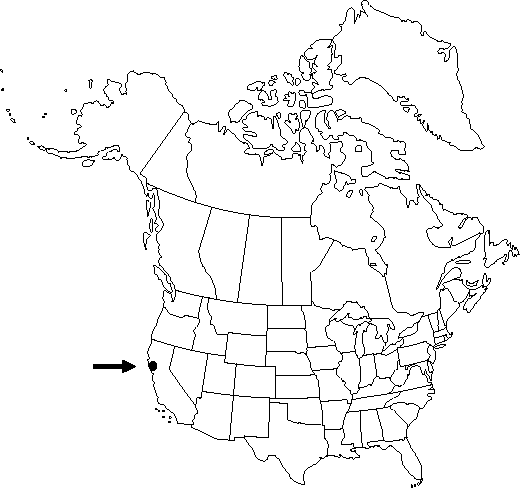Delphinium luteum
Bull. S. Calif. Acad. Sci. 6: 68. 1903.
Stems 20-40(-55) cm; base often reddish, nearly glabrous. Leaves mostly on proximal 1/4 of stem; basal leaves 4-9 at anthesis; cauline leaves 2-4 at anthesis; petiole 0.5-6 cm. Leaf blade round to pentagonal, 1-5 × 2-10 cm, nearly glabrous; ultimate lobes 3-5, width 8-30 mm (basal), 5-15 mm (cauline). Inflorescences 5-25(-37)-flowered; pedicel (1-)3-5(-7) cm, puberulent; bracteoles 6-10(-17) mm from flowers, green, linear-lanceolate, 6-7 mm, nearly glabrous. Flowers: sepals bright yellow, puberulent, appearing waxy, lateral sepals ± forward pointing, (11-)14-16 × (6-)9-13 mm, spur straight, ca. 30° below horizontal, 11-20 mm; lower petal blades elevated, exposing stamens, 3-4 mm, clefts 0.5-1.5 mm; hairs sparse or absent, ± evenly distributed if present, white to yellow. Fruits 11-14 mm, 3.5-4.5 times longer than wide, glabrous. Seeds unwinged; seed coat cell surfaces smooth.
Phenology: Flowering late winter-mid spring.
Habitat: Wet cliffs, coastal grassland or chaparral
Elevation: 0-50 m
Discussion
Of conservation concern.
Delphinium luteum is presently known from only three populations. It is known to hybridize with D. decorum and with D. nudicaule. Populations of D. hesperium subsp. hesperium also occur at the type locality; D. luteum flowers earlier and hybrids are not known.
Delphinium luteum is not likely to be mistaken for any other species of Delphinium. It has been treated as a variety of D. nudicaule and is closely related to that species. Sepals of the infrequent yellow-flowered phase of D. nudicaule, however, have a much drabber appearance compared with the bright shining yellow of the sepals in D. luteum.
Selected References
None.
